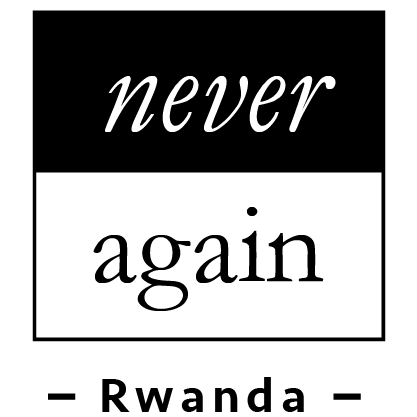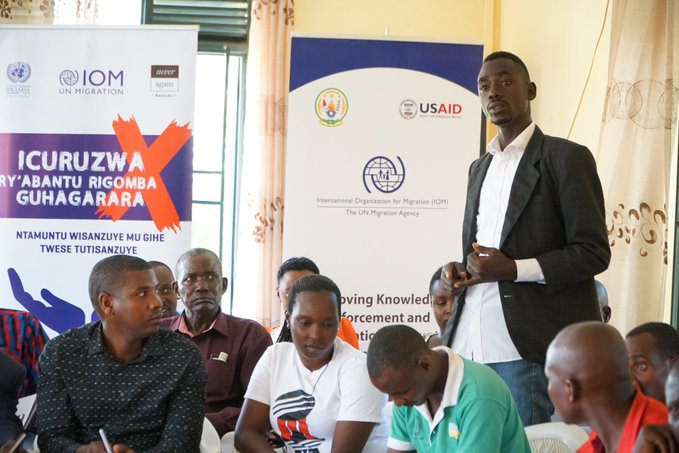Based on the comprehensive research conducted earlier this year on the situation of Human Trafficking in Rwanda, NAR has committed to a series of activities that aim to develop and enhance awareness and engagement of the public in an attempt to prevent and combat human trafficking.
It’s a proven approach that raising awareness is a crucial step in mobilizing public support for any cause. The first in a sequence of activities to raise awareness on human trafficking in Rwanda was cross-border dialogues. Given that dialogue is a core NAR approach, it was used to provide a space for citizens to discuss their views and share their experiences on Human Trafficking and develop holistic approaches to respond to and prevent future incidences. The dialogue spaces also provided room for collaboration with decision makers and actors at all levels, so as to combine efforts towards ending human trafficking.
The dialogue sessions took place in five districts namely: Rubavu, Rusizi, Burera, Nyagatare, and Gicumbi. The spaces comprised of diverse participants who were identified by focal persons in each district with help of local leaders. Individuals from the most at risk groups of human trafficking were selected and included youth, refugees, opinion leaders, community members and leaders. Each of these groups comprised of 60 participants.
The current status of human trafficking in and around Rwanda is alarming. In the region, majority of human trafficking victims identified were from Burundi, followed by the Democratic Republic of Congo and Rwanda. The demographics of trafficking victims indicate that women were the most likely to be trafficked, while the greatest majority of victims of human trafficking are aged 30 or younger. The areas most affected by human trafficking were found to be the districts named above as they are located on the borders to neighboring countries, and due to the easy migration of people within the region and porous borders, this enables trafficking to flourish.
An experienced moderator with a broad understanding of human trafficking facilitated each of the cross-border dialogue sessions. Various examples and scenarios to paint a picture that shows various form of human trafficking were used. In many of the districts, at the beginning of the sessions, it was clear that many of the participants had a vague understanding of human trafficking and often confused it with gender-based violence, child labor or traditional slavery. As the participants further engaged in discussion and experience sharing, they were able to grasp the concept and process of human trafficking by the end of the dialogue session.
The root causes and driving factors of human trafficking were identified as poverty, unemployment, high demand for cheap labor and services, regional conflicts and political challenges, porous borders and weak systems at border posts and the negative use of social media and technology that have opened up spaces for traffickers to connect with and recruit victims. In one of the dialogue sessions, it was explained that for human trafficking to occur, a trafficker recruits, harbors or transports a victim by the use of force, coercion or deception for the purpose of labor or services.
The process of human trafficking was explained in detail in each of the cross-border dialogue sessions using various scenarios. Participants learned that recruiters usually lure victims by promising them a better life through migration, employment or education and that perpetrators often build a relationship with the victims to gain their trust. The traffickers then use deception by approaching the parents or guardians of the victims with false promises of better opportunities in neighboring countries, which results in most victims going willingly with traffickers, unaware that they are deceiving them. Once victims realize that they have been trafficked, traffickers isolate them and restrict their movement by locking them up in a house, depriving them of money, confiscating their phones to restrict their ability to communicate and retaining their travel documents.
By the end of the cross-border dialogues, participants in each district were able to easily identify human trafficking even in scenarios where it was disguised as an employment opportunity. To help prevent human trafficking and reduce the risk of others being trafficked, participants were encouraged to discuss what they learned with their families and communities and were given toll free lines to call when they detect someone being trafficked or have any information.
The next activity that will follow the cross-border dialogues will be trainings, roundtable discussion and campaigns, which will bring together the representatives of community groups; youth, women, refugees, community leaders with decision makers, responsible institutions and other actors involved in one way or the other in the prevention and response to trafficking in persons.
End Human Trafficking: No one is free until we are all free.


